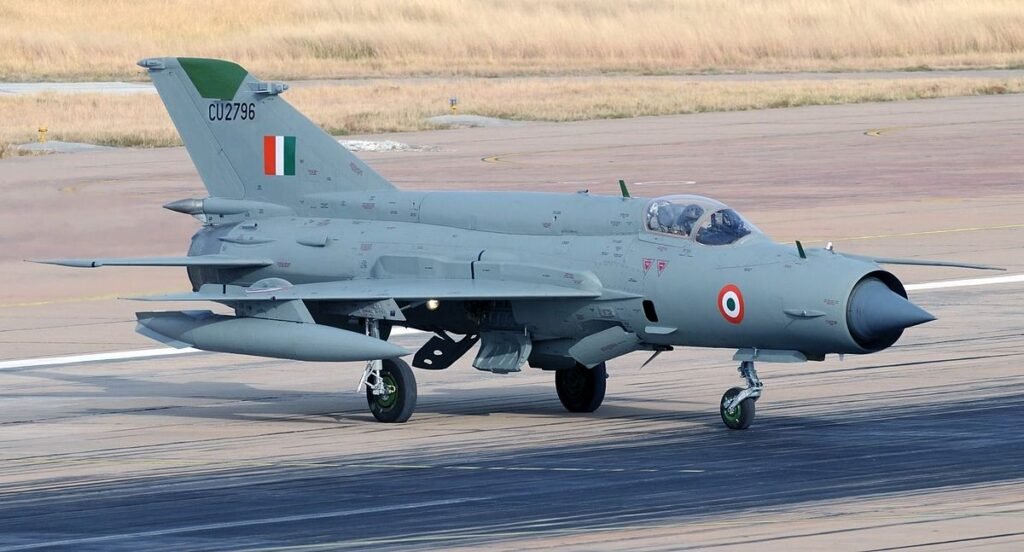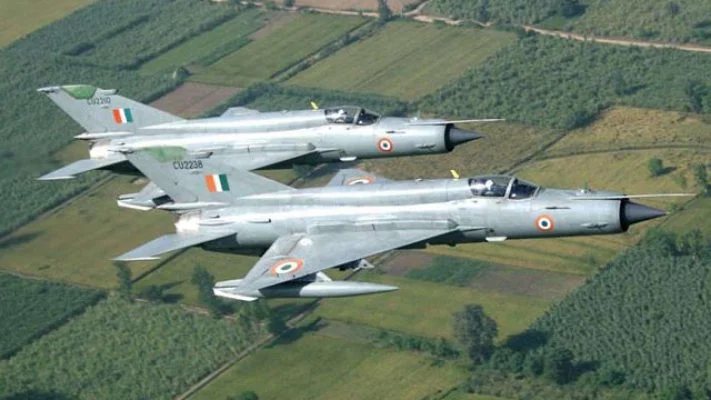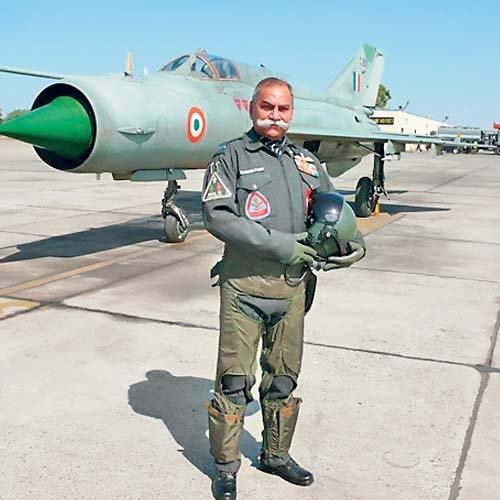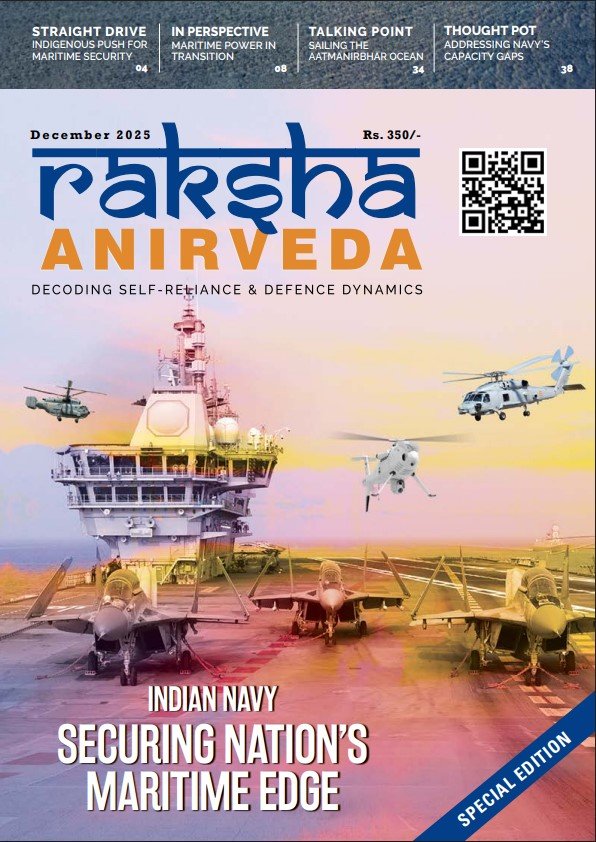Widely recognised as one of the top-notch fighter pilots in the world, Air Commodore Surendra Singh Tyagi (Retd) has done the highest number of operational missions on the MiG-21 globally. Air Cmde Tyagi holds the world record for the most flying hours — 4,005 hours and 6,316 sorties on the MiG-21. This feat was even acknowledged by the Global Head of Operations of MiG-21 Russia, who presented him with a trophy in 2013. As the IAF prepares to retire the MiG-21 after six decades of service, Air Commodore Tyagi offers invaluable perspective and insight on the aircraft’s legacy, its performance, and the future of combat aviation in the country. Excerpts from an interview with Neeraj Mahajan
RA. As a pilot, fighter pilot, you have defied death so many times what do you think needs to be done to minimise the risk to the lives of pilots?
SST. One should make the aircraft as safe as possible. This is the difference – now and before. In the olden days, Russians didn’t believe in adding too many safety features like the Western countries. Even the Hunter had a better ejection seat than MiG-21.
The Western world had started making things which were very safe for the pilots like getting indications, automatic things to initiate the recovery or recovery from any emergency situation. All those kinds of things. Today this has become a major feature in the cockpits of all the fighter aircrafts. It is just like Google telling you to turn left or right because there is a traffic jam ahead.
These safety features have made the pilot’s life much easier. Now all that the pilot has to do is to concentrate on managing the systems in the aircraft now. It is always better to have features like an ejection seat. We had an ejection seat in the earlier version of MiG-21 (FL version, Type 77) for which you needed to have a minimum speed of 130 kilometres and minimum height of 30 metres at certain level flight. So if you were descending by any margin, whatever the rate of descent into 6 times had to be added to the height to make a safe ejection. This created a very large requirement for safe ejection. This is why initially we lost a lot of pilots during low level flying due to bird strike or engine failures as there was no time for the pilot to make a safe ejection.

RA. You have flown so many operational missions on MiG-21 – more than anyone else in the world. Why do you think the Indian Air Force lost so many of the MIGs in the last 6 decades?
SST. Today, we are the fourth largest economy. At that point in time, we were a very poor country. We used to have a shoe-string budget. Initially when we bought the MiG-21 it used to cost around 47 lakhs. It was written on the nose of the aircraft that this aircraft cost 47 lakhs.
Can you imagine what went on in the mind of the pilot, when he was doing an external inspection before getting into the cockpit when the cost of a brand new Ambassador or Fiat car from the showroom at that time was just around Rs 10,000? There was a very big difference. So, the pilots were made very conscious that this was an expensive machine, and we can’t afford to lose it.
Initially when we bought the MiG-21 it used to cost around 47 lakhs. It was written on the nose of the aircraft that this aircraft cost 47 lakhs. So, the pilots were very conscious that it was an expensive machine, and they couldn’t afford to lose it
What happened because of that, is that when you had a bird hit while flying low, the engines flamed out. Now it is a well-established fact that when the engine flame out because of bird hit, your turbines get damaged and you can never revive the aircraft. But we still used to keep trying. The drill in such a situation is to pull up, go to the safe height and eject. But we used to pull up to the height and initiate a relight system which takes about 45 seconds. This never used to work. As a result, the speed used to drop, since there was no engine, the aircraft used to start sinking. Hence there was no time for the pilots to eject or make a safe ejection.
The pilots who waited till the last minute and ejected, very close to the ground, suffered serious injuries in the spine, legs, etc. That was the reason why we lost a very large number of pilots who could have very well ejected by pulling up, going to the safe height.
RA. The MiG-21 is called flying coffin or widow maker. Is this a fair reputation?
SST. Of course not. You must realise that the press, for some reason, likes to sensationalise, scandalise issues that make juicy headlines whether it is true or not. It is very unfair. I used to always tell people that please remember when you write these kinds of sensational headlines, there are younger pilots who come in to fly.
Can you imagine what goes on in the mind of the pilot when he sits in a cockpit and you tell him that I am putting you in a coffin? What kind of mental state would that person be? It is very damaging. But thank God fighter pilots don’t believe that death is a problem in life. They never think of death, they never are scared of death. Anyone who thinks otherwise doesn’t stay in the fighter squadron. He is sent out to transport or helicopter.
MiG-21 has a very good rate of climb. It also has a very good rate of turn and good acceleration. So, I think it’s a complete package. Of course, unless you buy something which is very, very advanced. But you have to remember that an upgraded MIG-21 Bison costs only Rs 45 crore while the other fighter aircrafts cost anywhere between Rs 400-800 crore. So you can buy the whole squadron at the cost of one aircraft
The MiG-21 is a beautiful aircraft. There is a limitation when you do a loop. As per the book of the Russians, you are supposed to start with 1000 km speed and re-afterburner to complete the loop.
I have initiated a loop at 400 km. And I used to teach this to all the pilots so that their confidence level went up and they realised that this is a good machine. It always stays in control. But you have to handle it carefully. But you can’t mishandle this aircraft. If you mishandle it, then recovery is very difficult.

RA. In terms of manoeuvrability, reliability and combat effectiveness, what are MiG-21’s strengths and weaknesses?
SST. MiG-21 has a good thrust weight ratio. So, its rate of turn is good. It also has a very good rate of climb. This means that it can out climb most of these other aircrafts in vertical manoeuvring capability, except, of course, the MiG-29, which is a purely interceptor and one of the best in the world, at the moment.
MiG-21, can be handled at a very low speed, which most other aircrafts are unable to do. This is the surprise element. It also has a very good rate of turn and good acceleration. So, I think it’s a complete package. Of course, unless you buy something which is very, very advanced. But you have to remember that an upgraded MIG-21 Bison costs only Rs 45 crore while the other fighter aircrafts cost anywhere between Rs 400-800 crore. So you can buy the whole squadron at the cost of one aircraft.
The MiG-21 was the backbone of the IAF for half a century, something very few aircraft in the world have achieved. Tejas has the potential to build a similar legacy, provided it is inducted in sufficient numbers and continuously upgraded
RA. The indigenously developed Tejas is seen as a replacement for MiG-21. From a pilot’s perspective, will it match or surpass the MiG-21’s operational records?
SST. Tejas is a completely different generation of fighter compared to the MiG-21. It is an excellent aircraft or obviously the cost is another factor compared to other aircraft which we buy from other world markets. If developed properly, Tejas will prove to be a very fine aircraft and a good replacement for MiG-21. But matching the MiG’s operational record — six decades of frontline service and thousands of sorties — will take time. The MiG-21 became legendary because it was the backbone of the IAF for half a century, something very few aircraft in the world have achieved. Tejas has the potential to build a similar legacy, provided it is inducted in sufficient numbers and continuously upgraded.
RA. What advice would you like to give to the young pilots who inherit the legacy of the MiG-21?
SST. To the young pilots my first advice is to carry forward its spirit — of courage, adaptability, and relentless professionalism. Never forget that aircraft will come and go, but the essence of a fighter pilot lies in discipline, humility, and continuous learning. Respect the aircraft you fly, no matter how advanced, and always remember that even the most sophisticated machine is only as good as the man or woman in the cockpit. Stay curious, train hard, and never lose the edge that made MiG-21 pilots legendary — the ability to deliver under pressure. Above all, wear the uniform with pride, because every sortie you fly adds to the heritage of those who flew before you.
–The writer is a seasoned media professional with over three decades of experience in print, electronic, and web media. He is presently Editor of Taazakhabar News. The views expressed are of the writer and do not necessarily reflect the views of Raksha Anirveda






